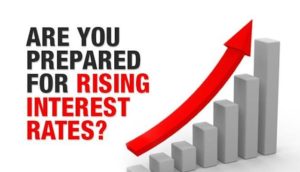The Bank of Canada has left its policy rate unchanged in its first announcement of the year, keeping rates where they are for a fourth straight decision but giving little indication of a timeline for possible cuts.
The central bank revealed on Wednesday that its overnight rate, which leads variable mortgage rates in Canada, would remain at its current level of 5.0%, but continued to highlight its concern over inflation risks and the persistence of underlying inflation.
The decision had been widely expected by markets, which had anticipated no movement by the Bank in January as expectation continues to build around a possible June loosening of monetary policy.
While Canada’s annual inflation rate ticked upwards to 3.4% at the last reading, it’s fallen substantially from a 39-year high of 8.1% in June 2022 – and with forecasts predicting the economy will grow at a rate of just 0.3% in the first quarter of this year, much of the heat that triggered the Bank of Canada’s aggressive spate of rate increases in recent times appears to have dissipated.
The central bank kept its trendsetting rate at a rock-bottom 0.25% throughout the COVID-19 pandemic but began hiking rates in March 2022 as inflation continued to spike. That rate has since jumped by 475 basis points, a surge that saw borrowing costs balloon for scores of mortgage holders and poured cold water over a previously red-hot national housing market.
Last January, the Bank declared a “conditional pause” on interest rate hikes, an announcement that spurred an unexpected housing market resurgence and inflation uptick in the spring. It appears eager to avoid a repeat of that scenario this time around – although market observers will be closely watching the Bank’s language between now and its next announcement, scheduled for March 6, to pick up possible clues on when rates could be on the way down.
Those skyrocketing mortgage servicing costs – which increased by 28.6% on a year-over-year basis in December, according to Statistics Canada – have been cited as a cause for concern by leading economists, with a glut of mortgages up for renewal between now and 2026 at significantly higher rates than before.
Michael Distefano
Level 2 Mortgage Agent
License M08000052
M: 905-246-5363 APPLY NOW
1-4687 Queen St Niagara Falls, ON, L2E 2L9
dlcbtbniagara@gmail.com betterthanbankmortgage.com beatthebankmortgage.com
Independently Owned & Operated


 High inflation has become such a risk to the economy, the central bank will do anything to slow it. That might include raising interest rates higher than already aggressive forecasts have called. This was the message from the Bank of Canada (BoC) at the Standing Committee on Finance today. The central bank Governor made it clear they will act “forcefully” to control inflation, which won’t be coming down by itself. That can mean much higher mortgage rates than forecast.
High inflation has become such a risk to the economy, the central bank will do anything to slow it. That might include raising interest rates higher than already aggressive forecasts have called. This was the message from the Bank of Canada (BoC) at the Standing Committee on Finance today. The central bank Governor made it clear they will act “forcefully” to control inflation, which won’t be coming down by itself. That can mean much higher mortgage rates than forecast.

